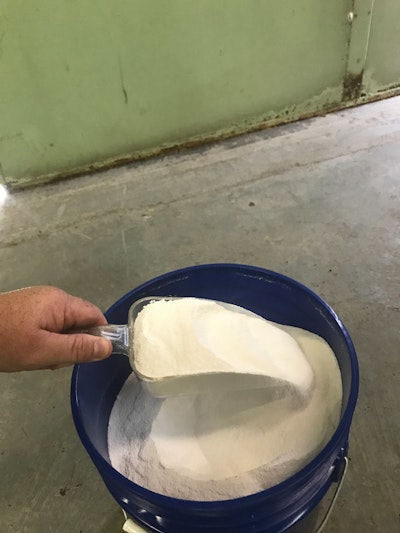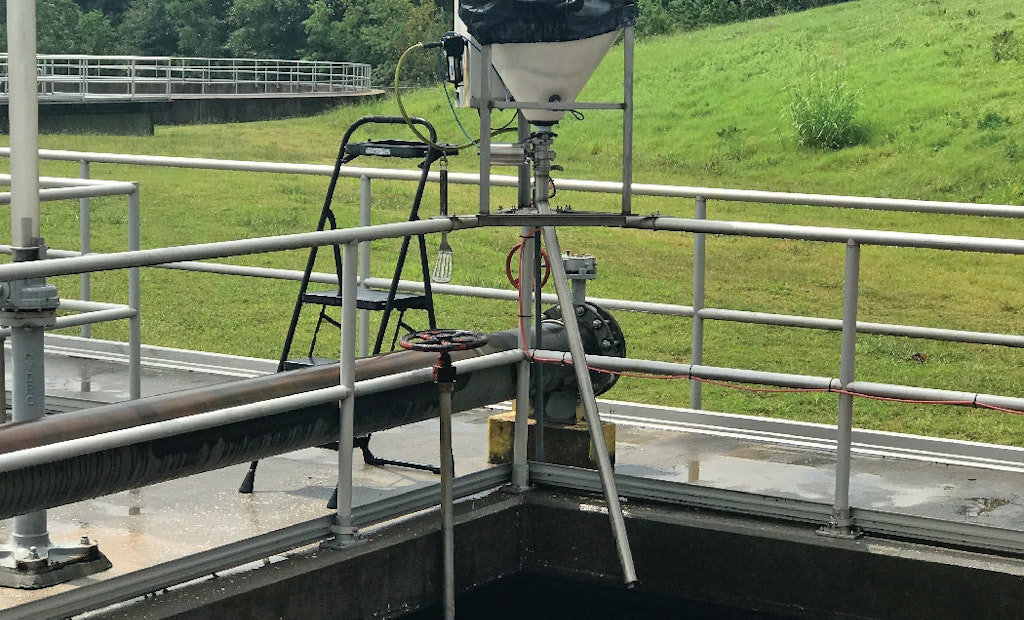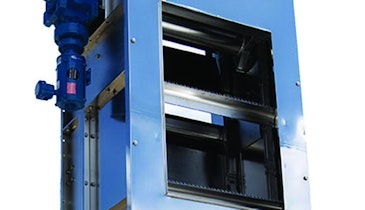Interested in Dewatering/Biosolids?
Get Dewatering/Biosolids articles, news and videos right in your inbox! Sign up now.
Dewatering/Biosolids + Get AlertsBiosolids can be among the valuable resources recovered from clean-water plants. Yet, few operators would object to producing smaller volumes because the processing, handling and hauling cost money.
Drylet, a wastewater remediation company, now offers a solution that, according to engineering reports, can reduce biosolids volumes by as much as half while also reducing chemical and energy costs and labor — all without capital investment.
Aqua Assist Wastewater is a dry, free-flowing powder that delivers high-performing microbes along with a substrate on which they can readily grow, multiply, and accelerate the breakdown of organic material in the waste stream.
The product received a 2017 Innovative Technology Award from the Water Environment Federation. Luka Erceg, Drylet president and CEO, talked about the product in an interview with Treatment Plant Operator.
TPO: What are the advantages of reducing the volume of biosolids in treatment plants?
Erceg: Wastewater treatment plants generate large volumes of biosolids, and even though they tend to dewater the material, they still send a lot of waste to landfill or land-application sites. In general, large volumes of biosolids contribute to higher costs for energy, dewatering, odor reduction, and equipment operation and maintenance.
TPO: What benefits have operators observed in plants that use this formulation?
Erceg: What we do is change the microbial environment of the wastewater treatment plant with much more beneficial microbes. So in the end, what comes out of the plant is a much cleaner biosolids that is far easier to certify as Class A. We see reduced fecal coliforms and other toxics and biologics that you don’t want if you’re doing land application. Another benefit is that plants have seen 25 to 30 percent ammonia and phosphorus reductions because the microbes are using some of those nutrients for their own beneficial growth.
TPO: Where in the process is this product introduced?
Erceg: That depends on the plant configuration. Some plants use it in primary or secondary clarification; more typically, it is introduced in the aeration basins. Sometimes they move upstream into the collections system to increase the residence time for the microbes to work.
TPO: What exactly is the product formulation? Does it use proprietary microbes?
Erceg: What we really offer is a delivery mechanism. Drylet doesn’t produce “wonder bugs.” We provide microbes that we know through our research to be highly effective for BOD and COD reduction. And we use a nontoxic, inert substrate that is a highly adsorbent material for the microbes to latch on to.
TPO: What is the effect of adding this substrate to the process?
Erceg: It is not unlike having an integrated fixed-film activated sludge plant. As in an IFAS plant, we add media to the aeration process to increase surface area for microbial growth. For example, one 77 mgd facility implemented an IFAS system and introduced 36.3 million square meters of surface area in the process. That’s 471.000 square meters per mgd. For that same plant, our solution would introduce 8.5 million square meters — almost 18 times as much — for promoting microbial activity.
TPO: How would you describe the overall look and feel of the Aqua Assist Wastewater product?
Erceg: It looks like table salt. It’s a form of silica that is completely safe to use. The granules are irregularly shaped and from 200 to 600 microns in diameter. One kilogram of our product used on a daily basis can remediate up to 50 percent of the solids in a 1 mgd treatment plant.
TPO: What is the nature of the microbes used in the product?
Erceg: We use non-GMO microbes that are all Level 1 for biosafety. They are very common and are indigenous to people. In fact, most of us carry these microbes in our stomachs. We purchase the microbes from producers and load them on the substrate.
TPO: What happens when this material is introduced to the process?
Erceg: There is already microbial activity going on in a treatment plant, and you have the good, the bad, and the indifferent microbes in the process. In activated sludge, you basically grow and increase the volume of those microbes to promote waste digestion — that’s the operating system of the treatment plant. We change the operating system by increasing the volume of beneficial microbes. We have 100 times the colony-forming units as the same volume of a liquid culture. And because the microbes are loaded on particles, they are protected from protozoa and other microbes that might feed on them. Because we protect them and promote their growth, we enable faster growth in microbial activity.
TPO: Can you provide examples of plants that have used this formulation successfully?
Erceg: We operate in 41 wastewater treatment plants. A plant in Texas used our product to reseed their activated sludge process. Ordinarily, they would have to haul in activated sludge from another plant; then, it would take about three weeks to really get the microbial activity going. They did it in days by adding buckets of our product. At a 4 mgd municipal utility district plant outside Houston, we showed that we could reduce their biosolids by 35 percent. We’ve seen clients get as high as 53 percent solids reduction.
TPO: How do you approach the offering of this solution to prospective users?
Erceg: We don’t simply sell our product as an additive. We focus on outcomes. So, we work with clients on almost a subscription basis, helping them get to the outcomes they desire. Our interest is to see them showing better effluent along with better solids and less solids coming out of the plant. When they start introducing the product, within 30 days the plant will look different. Within 60 days, it will be operating far different than ever before. In 90 days, the benefits should be flowing through to the income statement.







